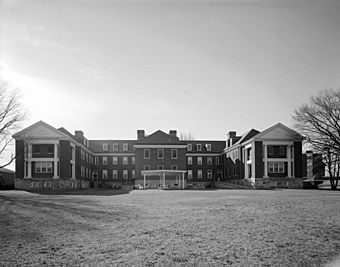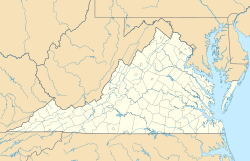Salem Veterans Affairs Medical Center facts for kids
|
Roanoke Veterans Administration Hospital Historic District
|
|

HABS photograph of Building 6
|
|
| Location | 1970 Roanoke Blvd., Salem, Virginia |
|---|---|
| Area | 206 acres (83 ha) |
| Built | c. 1934-1950 |
| Architectural style | Colonial Revival, Classical Revival |
| MPS | United States Second Generation Veterans Hospitals Multiple Property Submission (MPS) |
| NRHP reference No. | 12000609 |
Quick facts for kids Significant dates |
|
| Added to NRHP | September 4, 2012 |
The Salem Veteran Affairs Medical Center (VAMC) is a special hospital in Salem, Virginia. It helps veterans, who are people who have served in the military. This hospital is part of the United States Department of Veterans Affairs, which is a government group that supports veterans.
The Salem VAMC provides health care to veterans in a large area. This area covers 26 counties in Southwest Virginia. Besides the main hospital in Salem, there are also smaller clinics. These clinics are located in Danville, Lynchburg, Tazewell, Wytheville, and Staunton.
Roanoke VA Hospital: A Historic Place
The Roanoke Veterans Administration Hospital Historic District is a special area. It includes many old buildings, sites, and structures. These are important because they show how the hospital looked a long time ago.
Building the Hospital
Construction on this hospital began in 1934. More buildings were added over the years, up until 1950. The Main Building was built in 1934. It sits on a raised area and is the most important building in the historic district.
Important Buildings and Styles
Other important buildings from the early days include the Administration Building and the Dining Hall. There was also a Recreation Building for patients. A building for specific patient groups was also part of the original design.
Later additions included four Continued Treatment Buildings. These were built between 1938 and 1941. A Neuropsychiatric Infirmary Building was added in 1936.
The buildings show popular architectural styles from that time. These styles are called Colonial Revival and Classical Revival. The historic district was added to the National Register of Historic Places in 2012. This means it is recognized as an important historical site.



